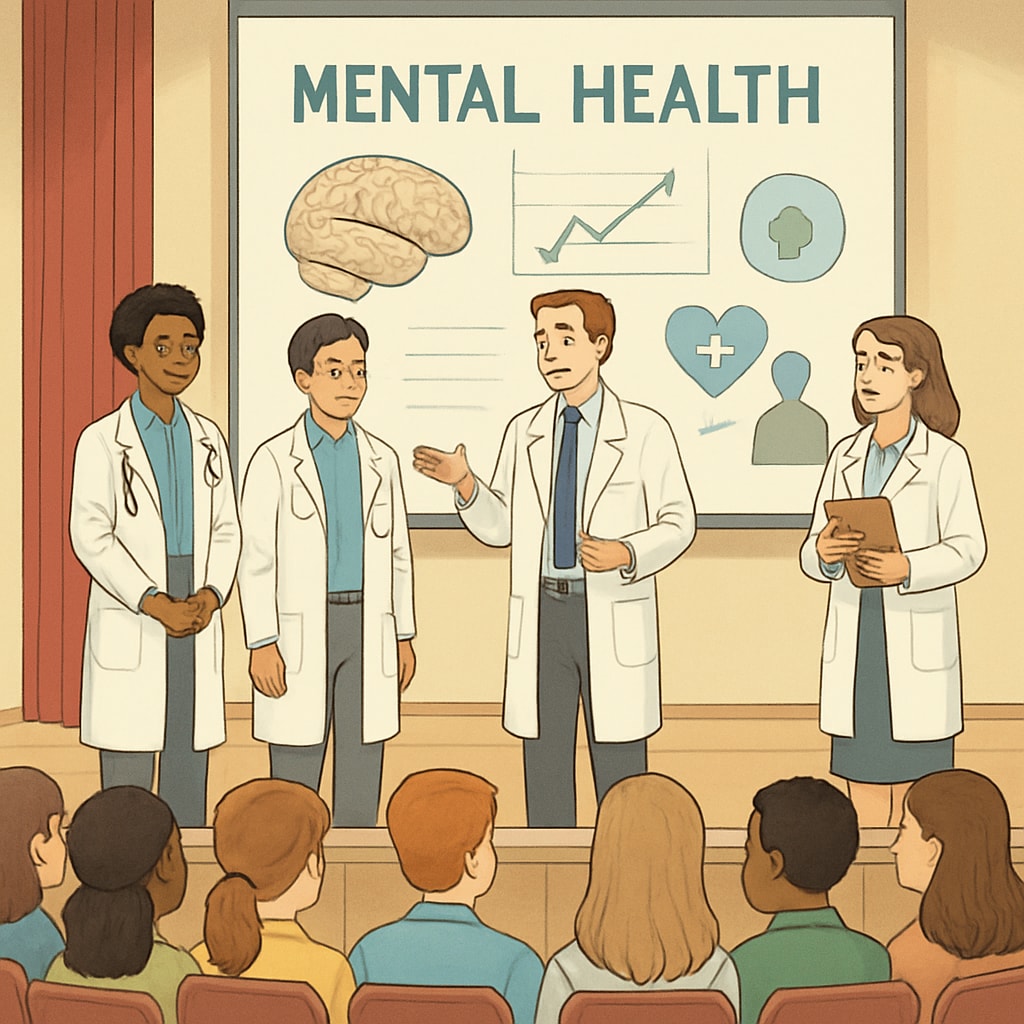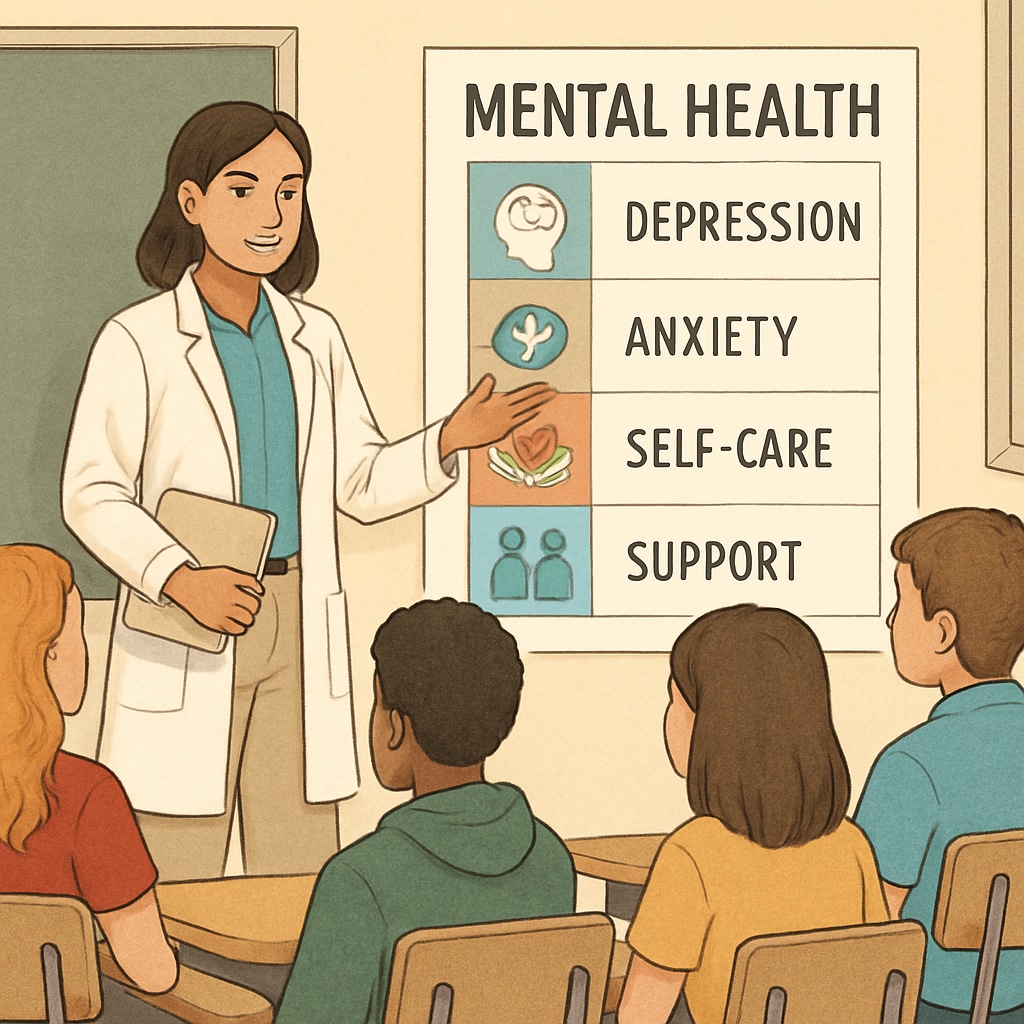Adolescent mental health is a growing concern, yet there remains a significant gap in addressing it effectively. Organizing high school mental health assemblies led by medical students offers an innovative solution. This approach not only leverages the expertise of future healthcare professionals but also fosters a connection between students and relatable mentors. By integrating education with medical insights, these assemblies could play a pivotal role in promoting mental well-being among teenagers.
The Need for Mental Health Education in High Schools
According to the World Health Organization, one in seven adolescents experiences mental health challenges globally. Despite this alarming statistic, many schools lack structured programs to address these issues. High school students often grapple with academic pressures, social dynamics, and personal challenges, which may lead to anxiety, depression, or other mental health conditions.
Incorporating mental health education into high school curricula is essential. However, schools often lack the resources or expertise to implement such programs effectively. This is where medical students can step in, bridging the gap with their knowledge and enthusiasm. By organizing assemblies, they can create a safe space for dialogue, raise awareness, and equip students with coping strategies.

How Medical Students Can Organize Effective Assemblies
Organizing a successful high school mental health assembly requires careful planning and collaboration. Here is a step-by-step framework:
- Collaborate with Schools: Begin by reaching out to high school administrators or counselors. Present the idea and explain the potential benefits of the assembly. Highlight the expertise of medical students and their ability to provide accurate, relatable information.
- Understand the Audience: Tailor the content to suit the age group and specific challenges faced by students. For example, younger high schoolers might need basic awareness, while older students could benefit from discussions about coping mechanisms and resources.
- Design Engaging Content: Use interactive methods such as role-playing, Q&A sessions, or multimedia presentations. Address common misconceptions about mental health and encourage open dialogue.
- Involve Experts: If possible, invite psychologists or mental health professionals to co-lead sessions. Their presence adds depth and credibility to the assembly.
- Evaluate Impact: After the assembly, gather feedback from students and teachers. Use this data to refine future sessions and ensure continuous improvement.
By following these steps, medical students can create meaningful and impactful assemblies that resonate with high school audiences.
Benefits of Medical-Led Assemblies
There are several advantages to having medical students lead high school mental health initiatives:
- Relatability: Medical students are often closer in age to high schoolers, making it easier for teenagers to connect with them.
- Expertise: As future healthcare professionals, medical students bring credible, science-based knowledge to the discussions.
- Community Engagement: These assemblies foster collaboration between educational institutions and healthcare communities, creating a support network for students.
- Empowerment: Assemblies can empower students by providing them with tools and resources to manage their mental health effectively.

Challenges and Solutions
While the concept is promising, it does come with challenges. For instance, medical students may face time constraints due to their academic workload. To address this, assemblies can be scheduled during breaks or as part of community service programs. Additionally, schools may have concerns about the content. Providing a detailed outline and collaborating with school counselors can help alleviate these worries.
Another challenge is ensuring that the sessions are inclusive and culturally sensitive. Medical students should receive training on these aspects to deliver content that resonates with diverse audiences.
By anticipating and addressing these challenges, medical students can maximize the impact of their efforts and contribute meaningfully to adolescent mental health education.
Conclusion: A Step Toward a Healthier Future
Organizing high school mental health assemblies led by medical students is a feasible and impactful way to bridge the gap in adolescent mental health education. By combining medical insights with engaging, age-appropriate content, these assemblies can promote awareness, reduce stigma, and empower students to prioritize their well-being. As a result, this initiative not only benefits teenagers but also prepares medical students for their future roles as compassionate healthcare providers.
With proper planning and collaboration, this innovative model could be widely adopted, creating a healthier, more informed generation of young people.


